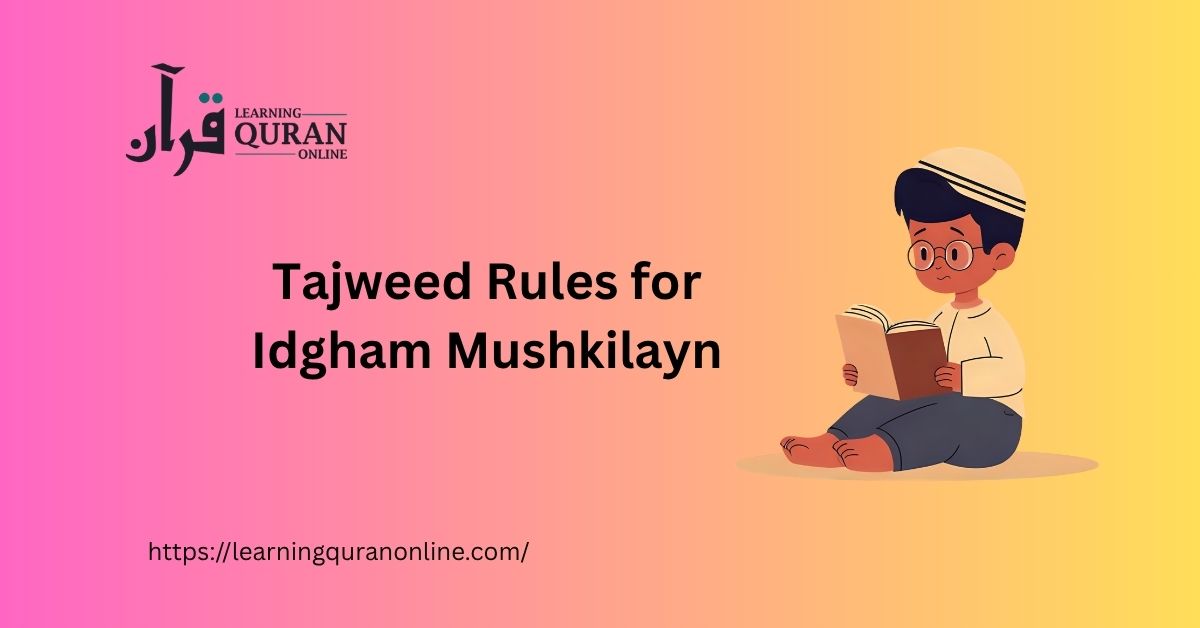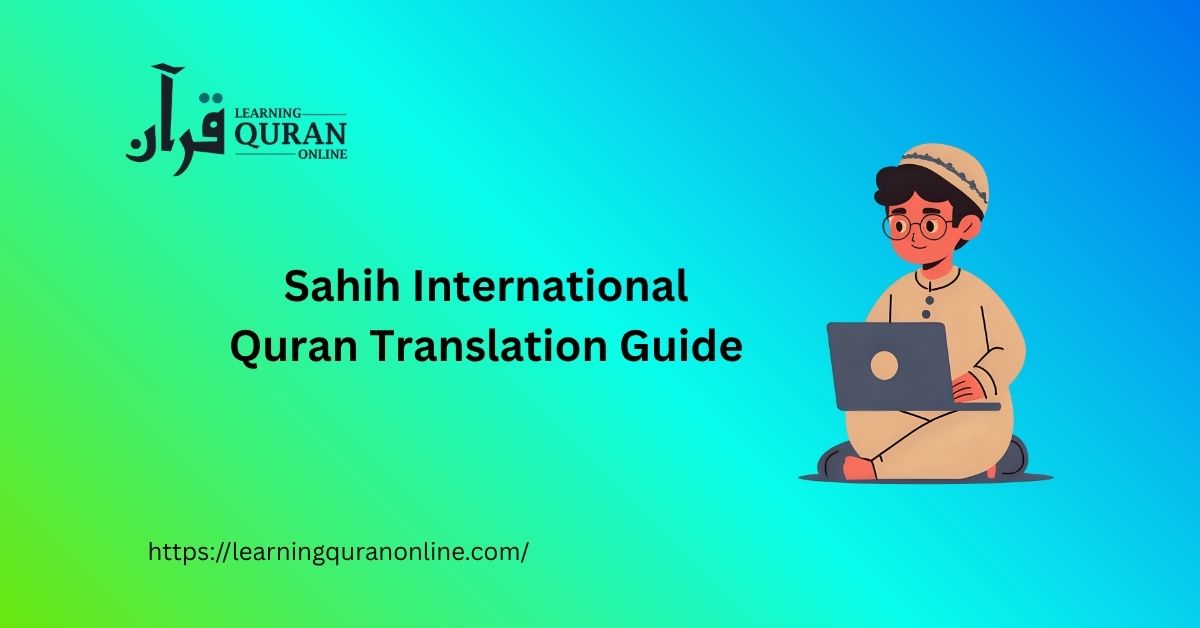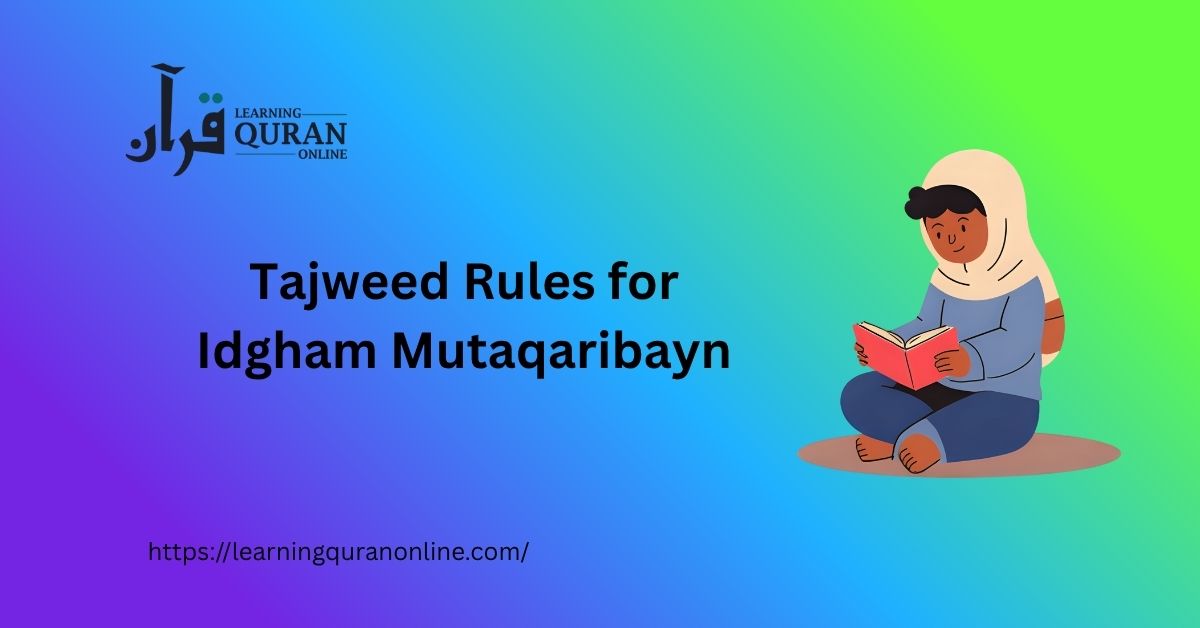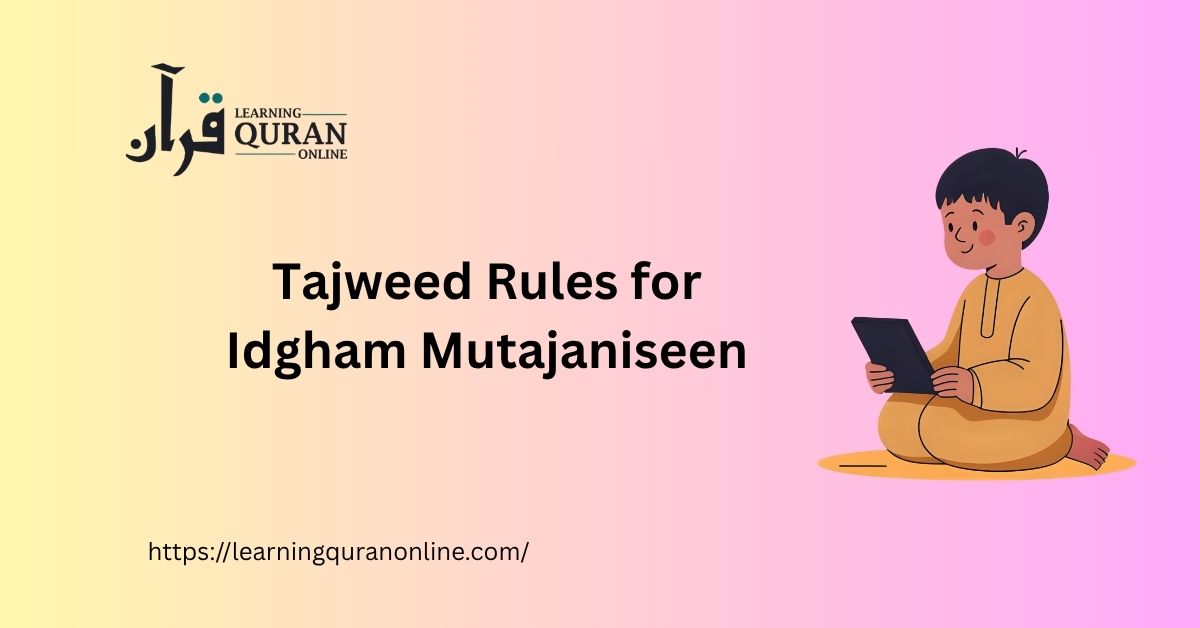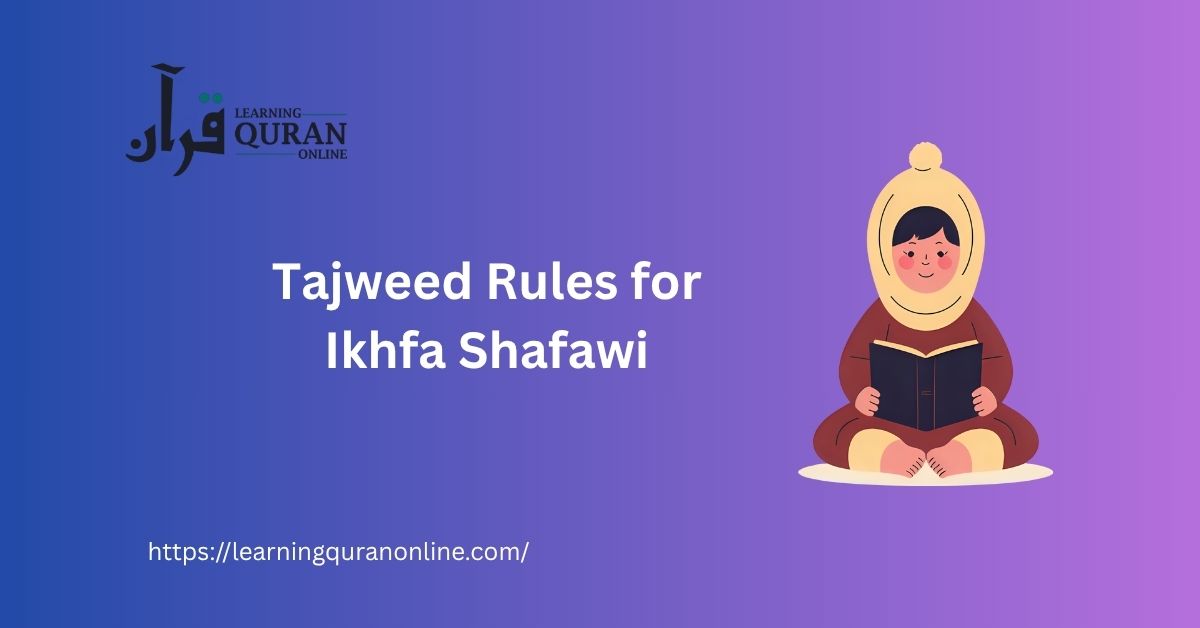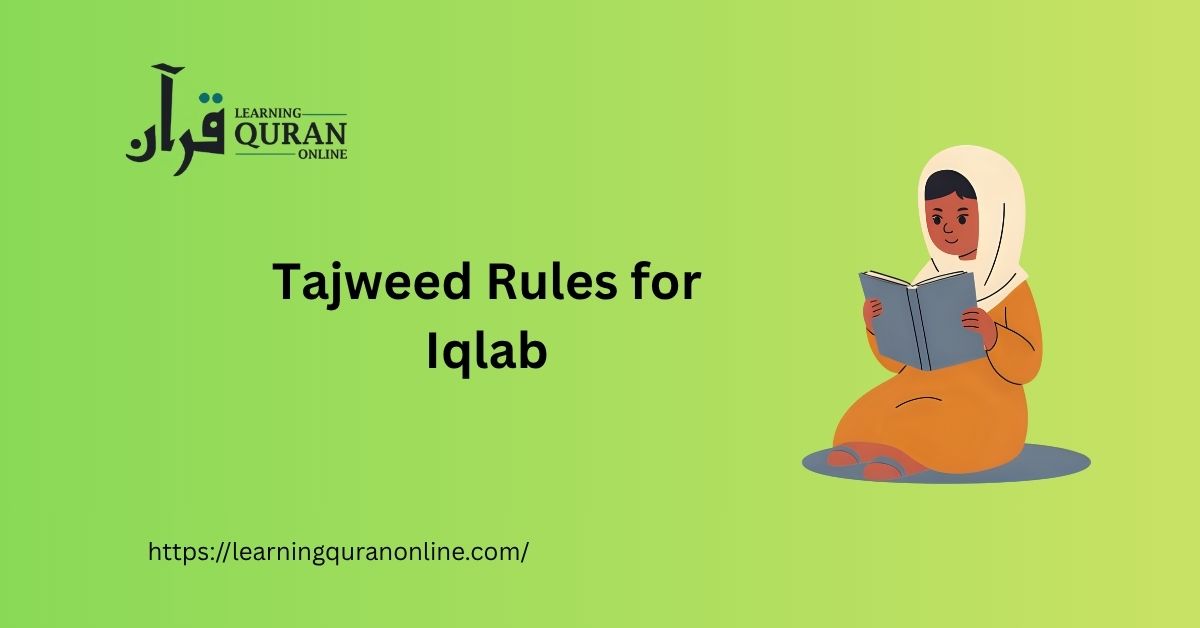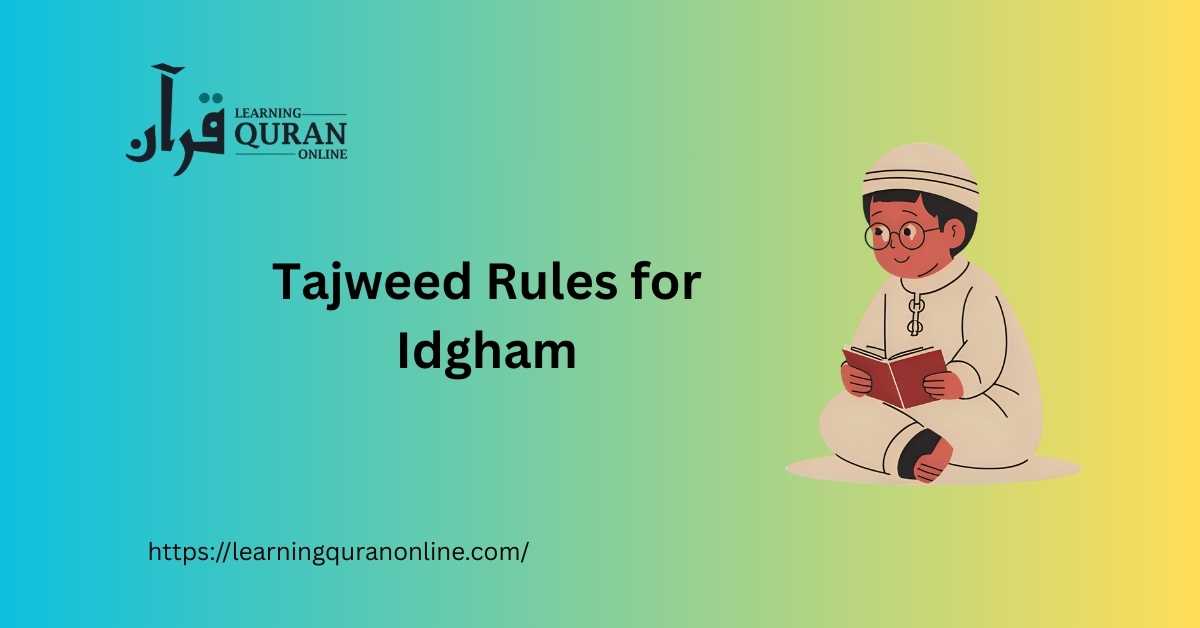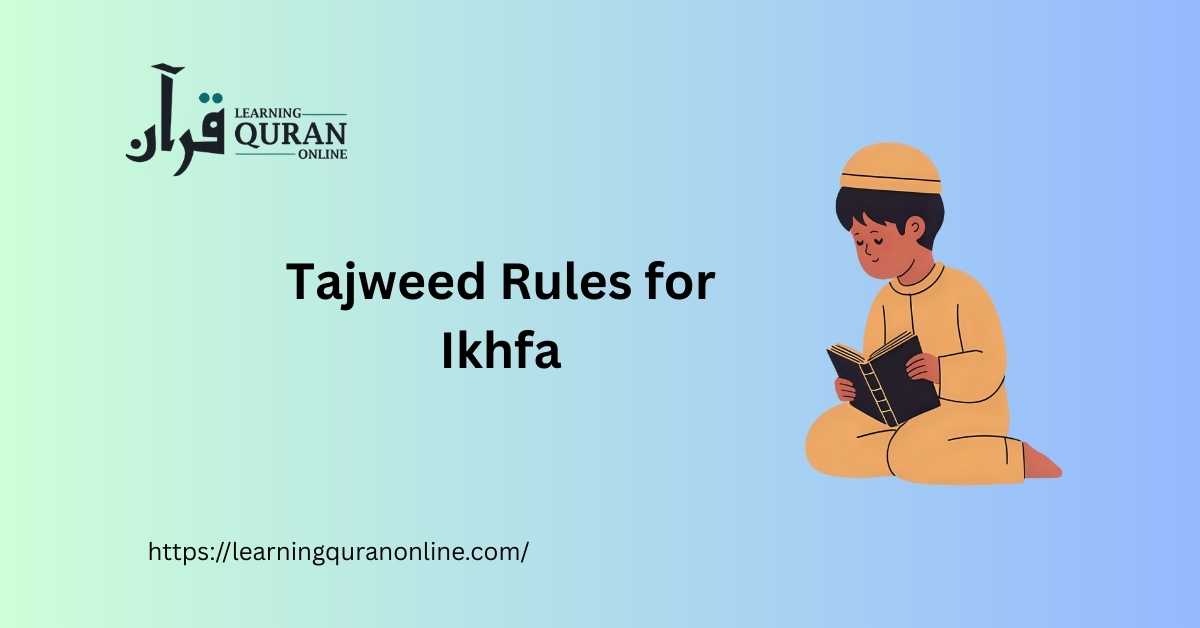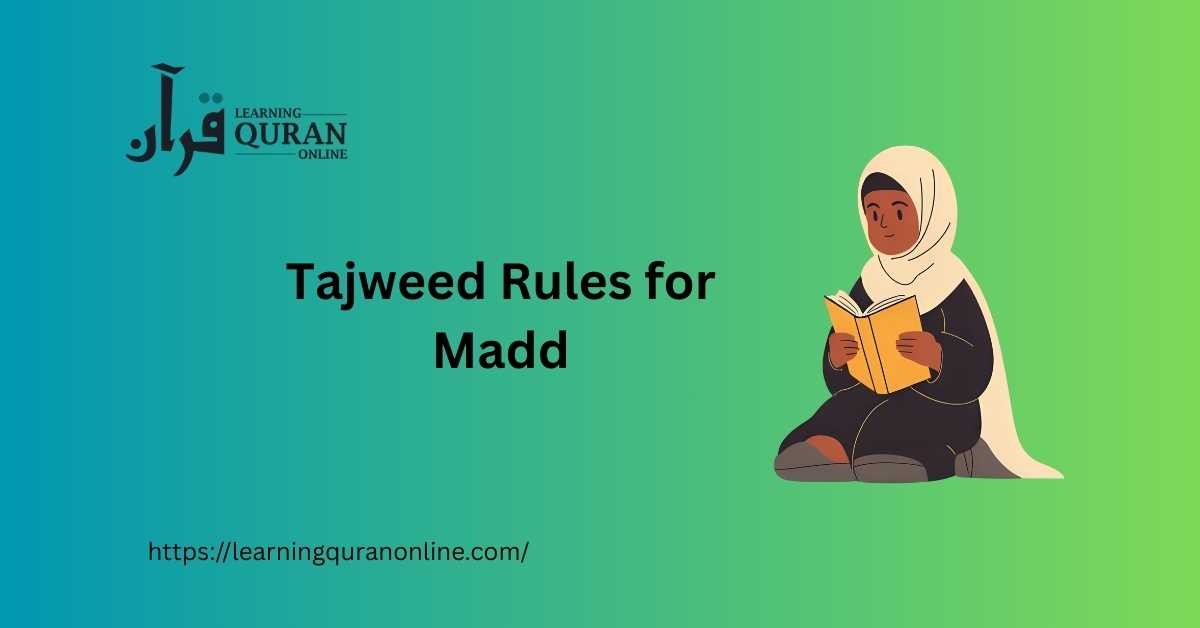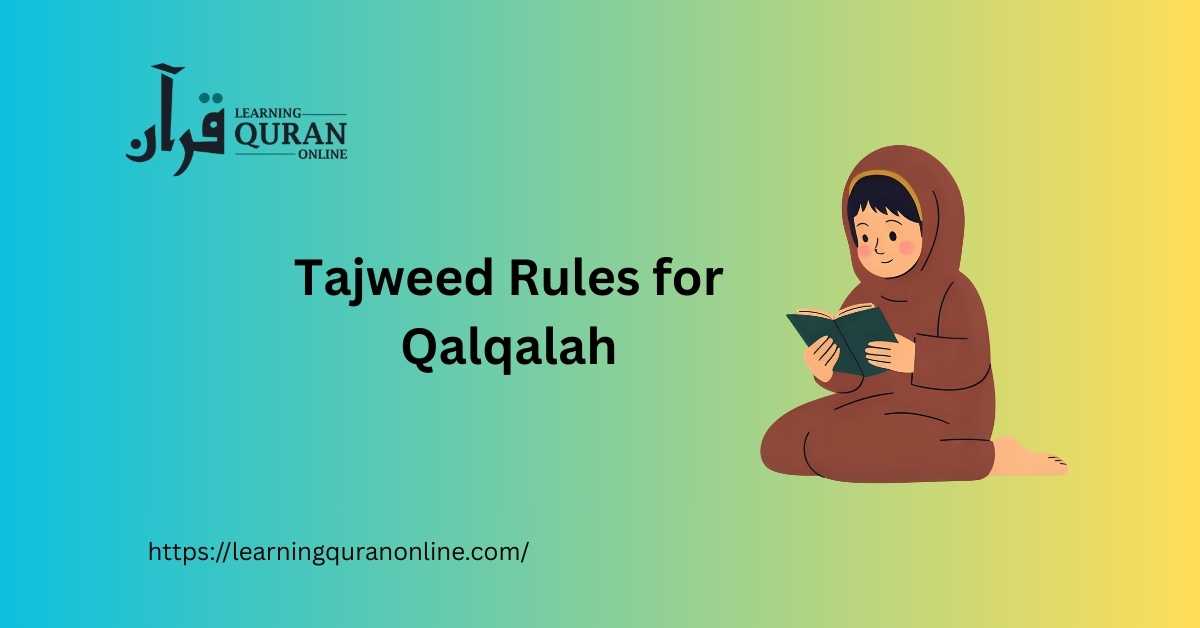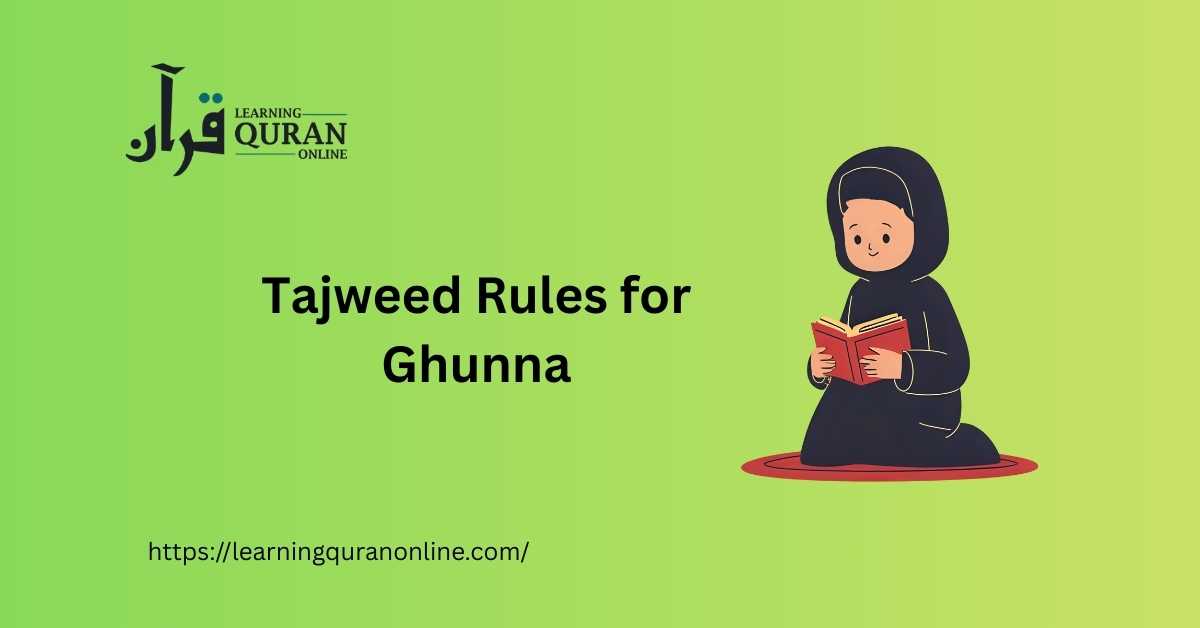Table of Contents
ToggleWhat is Idgham? Basic Tajweed Concept
Idgham (الإدغام) literally means “to merge” or “to blend.” In Tajweed, it refers to the assimilation of one letter into the next so that the first letter is not pronounced distinctly and its sound is merged into the following letter. Idgham is a key rule applied primarily when noon sākin (نْ) or tanween (ــًــ / ــٍــ / ــٌــ) is followed by one of specific letters.
Understanding Idgham Mushkilayn
The term “Idgham Mushkilayn” is used in many Tajweed explanations to describe idgham cases where two adjacent letters or conditions create an assimilation that is “difficult” or requires special attention. In practice, this focus usually highlights the differences between the two main patterns of idgham:
- Idgham bighunnah (إدغام بغنة) — idgham with nasalization (ghunnah).
- Idgham bila ghunnah (إدغام بغير غنة) — idgham without nasalization.
Idgham Mushkilayn stresses correctly identifying and performing the correct type of merging when the conditions might seem confusing to the learner.
Which Letters Cause Idgham?
When the rule applies to noon sākin or tanween, the letters that determine the type of idgham are traditionally grouped into:
- Idgham with ghunnah (بغنة): ي (ya’), ن (nun), م (mim), و (waw) — often remembered by the mnemonic يَنِمْو (or “يَنْمُو”).
- Idgham without ghunnah (بغير غنة): ل (lam), ر (ra’).
How Idgham Mushkilayn Works — Explanations and Examples
Below are concise descriptions and practical examples (with transliteration) that make the rules clear.
1. Idgham bighunnah (with nasalization)
When noon sākin or tanween is followed by one of these letters: ي، ن، م، و — you merge the noon sound into the following letter and pronounce the ghunnah (nasal sound) for a count of two (approximately two short vowel counts). The original noon sound is not pronounced as a separate consonant.
Examples:
- مِنْ يَعْمَلُ → pronounced as [mi-ny-a‘malu] (the ن merges into ي with ghunnah)
- كِتَابٌ مَنْ → when tanween meets م, you merge with nasalization
2. Idgham bila ghunnah (without nasalization)
When noon sākin or tanween is followed by ل or ر, the noon is merged into the following letter but without ghunnah. The sound of the noon disappears and the following letter is pronounced clearly, but not nasalized.
Examples:
- مِنْ رَبِّهِ → pronounced [mi-rabbihi] (the n merges into r without ghunnah)
- كِتَابٌ لِلْمُؤْمِنِينَ → tanween into ل produces idgham without ghunnah
Related Cases and Terminology
To fully grasp Idgham Mushkilayn, you should be comfortable with other related Tajweed rules, since they often appear together in recitation contexts:
- Izhar (clear pronunciation) — when the noon or tanween is pronounced clearly because the following letter is one of the throat letters.
- Ikhfa (hidden) — a partial concealment when noon sakinah/tanween is followed by specific letters; the noon is neither fully merged nor fully pronounced.
- Iqlab — changing the noon into a meem sound when followed by ب (ba’), accompanied by ghunnah.
Other Relevant Blogs:
- Tajweed Rules for Qalqalah
- Tajweed Rules for Ghunna
- Tajweed Rules for Meem Saakin
- Tajweed Rules for Noon Saakin and Tanween
- Tajweed Rules for Stopping and Starting
- Tajweed Rules for Madd
- Tajweed Rules for Ikhfa
- Tajweed Rules for Idgham
- Tajweed Rules for Iqlab
- Tajweed Rules for Ikhfa Shafawi
Signs in the Mushaf and How to Spot Idgham
Modern Qur’anic scripts often include color-coded tajweed rules or special symbols to indicate idgham. Common signs include:
- Shaddah (ّ) — indicates a doubled letter and usually signals idgham when the second letter has shaddah.
- Sukun (ْ) — shows the presence of a static letter such as noon sākin.
- Colored letters — many mushafs color the letters that cause idgham to help learners.
Recognizing these visual cues helps readers apply Idgham Mushkilayn more confidently during recitation.
Articulation (Makharij) and Attributes (Sifaat)
Proper application requires correct makharij (points of articulation) and sifaat (attributes of sound):
- Makharij: Know where the merging letter is produced — e.g., ي (palate), ن (tongue tip against front palate), م (lips), و (back of lips to back of mouth), ل (tongue), ر (tongue vibration).
- Sifaat: For idgham bighunnah, maintain ghunnah (nasal tone) for two counts. For idgham bila ghunnah, avoid nasalization and pronounce the assimilated letter clearly.
Common Mistakes to Avoid
Students often make avoidable errors when applying Idgham Mushkilayn. Watch out for these:
- Applying ghunnah where idgham is actually without ghunnah (e.g., inserting nasalization before ل or ر).
- Pronouncing the noon or tanween fully instead of merging it, which breaks the flow of recitation.
- Not observing the two-count duration of ghunnah when required.
- Confusing ikhfa or izhar with idgham; each rule has distinct letters and sounds.
Practice Tips and Exercises
Regular, focused practice is the best way to internalize Idgham Mushkilayn:
- Start slowly and identify every noon sākin and tanween in short verses. Decide which rule (izhar, ikhfa, idgham, iqlab) applies.
- Practice the six idgham letters in isolation with a teacher or audio model, holding ghunnah for two counts where needed.
- Use color-coded mushafs or tajweed apps to visually connect rules to text.
- Record your recitation and compare it with qualified reciters; self-assessment accelerates improvement.
- Learn under an experienced tajweed teacher and get feedback — guided correction is invaluable.
Why Idgham Mushkilayn Matters
Applying Tajweed rules like Idgham Mushkilayn preserves the original pronunciation and beauty of the Qur’an. It ensures accurate meanings, improves fluency, and maintains the prophetic method of recitation (tajweed according to the Qira’at). Proper idgham also enhances the listener’s experience through smooth, melodious recitation.
Where to Learn More
If you want structured lessons and personalized feedback on rules such as Idgham Mushkilayn, consider joining a certified online tajweed course. For example, Learning Quran Online offers tajweed classes that cover idgham, ikhfa, iqlab and all other tajweed rules with qualified instructors and practical drills.
Conclusion
Idgham Mushkilayn encapsulates some of the trickiest but most rewarding parts of Tajweed — merging letters correctly whether with or without ghunnah. Mastery requires understanding the letter groups, correct articulation, observing ghunnah durations, and regular practice. Use color-coded mushafs, record your recitations, and seek a qualified teacher to accelerate progress. With patient practice, your recitation will become more accurate, fluent and beautiful — insha’Allah.

